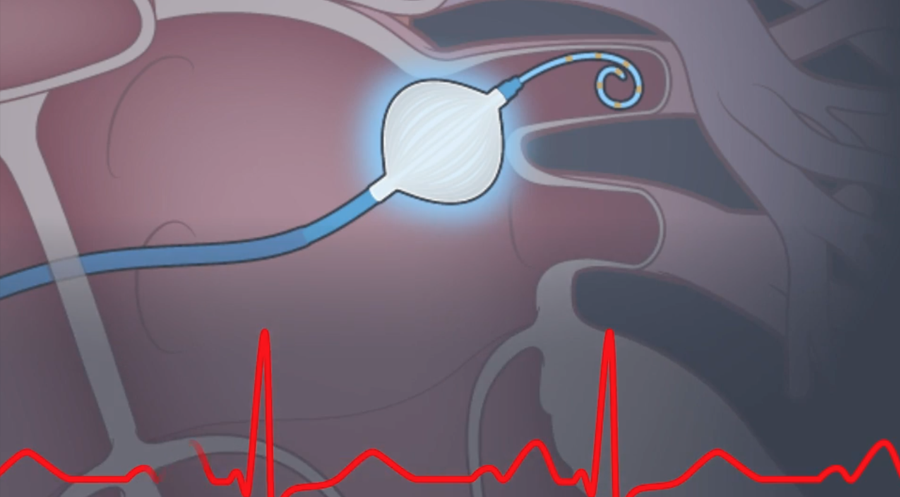UCalgary research may lead to new guidelines for treating atrial fibrillation
Atrial fibrillation (AF) is a progressive, irregular and often rapid heart rate that increases the risk of stroke, and heart failure. The most common type of heart arrhythmia, AF affects about 200,000 Canadians. Symptoms include heart palpitations, shortness of breath, weakness and fatigue. For some, AF can also be asymptomatic. The Canadian Heart and Stroke Foundation estimates a quarter of all strokes for those over the age of 40 are caused by AF.
Although AF can’t be cured, it can often be managed with medication or ablation — a minimally invasive procedure involving strategically scarring the heart to stop the abnormal electrical signals causing the issues with the heartbeat. Medication and different types of ablation have been used to manage AF for the last two decades, but there are questions as to which is best as an initial treatment.
Dr. Carlos Morillo, MD, a cardiologist and researcher at the Cumming School of Medicine (CSM) and specialist in the electrical system of heart, is trying to answer those questions.
He is co-investigator of a study recently published in the New England Journal of Medicine. The national, multi-centre study looked at whether it is better to treat early (paroxysmal) AF, which is characterized by episodes that come and go spontaneously, with medication or to perform ablation using a cryoballoon. Cryoablation uses a balloon-like device that is inserted through a catheter and freezes small areas of the heart to interrupt the flow of electricity.
The randomized clinical trial — the largest of its kind to date — focuses on patients between 50 and 60 years of age with paroxysmal AF. Study participants received either medication or ablation and were then monitored with implantable devices that recorded all the electrical activity in the heart.
“The ablation approach was significantly superior to the medication approach, and there are few risks,” says Morillo, a member of the Libin Cardiovascular Institute at the CSM. “This study shows that cryoablation improves quality of life for patients, reduces visits to hospital and significantly reduces the number of AF occurrences.”
Dr. Satish Raj, MD, a cardiologist and researcher at the CSM who deals with problems in the electrical system of the heart, says the study is important because AF can have a huge impact on quality of life and even lead to heart failure.
“AF is the most common arrhythmia, affecting a large proportion of the population, and its impact increases with age,” he says. “Studies like this play a pivotal role in helping us to better treat AF.”
Raj explains treating AF early may prevent structural changes in the heart, such as scarring, which leads to more frequent AF episodes.
“AF begets more AF, so by getting to these patients early, you may prevent worsening of the condition,” he says. “This is an exciting study that shows us a way to improve care and provide better outcomes for our patients.”
According to Morillo, AF care guidelines will likely be updated as a result of this and other similar trials.
Carlos Morillo is a professor in the departments of Cardiac Sciences and Medicine at the University of Calgary’s Cumming School of Medicine and Section Chief of the Cardiology Division at the Libin Cardiovascular Institute.
Satish Raj is a professor in the departments of Cardiac Sciences at the University of Calgary’s Cumming School of Medicine and medical director of the Arrhythmia Section in the Cardiology Division at the Libin Cardiovascular Institute.
The study was supported by the Cardiac Arrhythmia Network of Canada, which is a Networks of Centres of Excellence program funded from a joint initiative of the Natural Sciences and Engineering Research Council, the Social Sciences and Humanities Research Council, the Canadian Institutes of Health Research, Industry Canada, and Health Canada; by unrestricted grants from Medtronic and Baylis Medical; and by in-kind support from Medtronic Inc. (implantable cardiac monitors) and the University of British Columbia.
Source: University of Calgary

